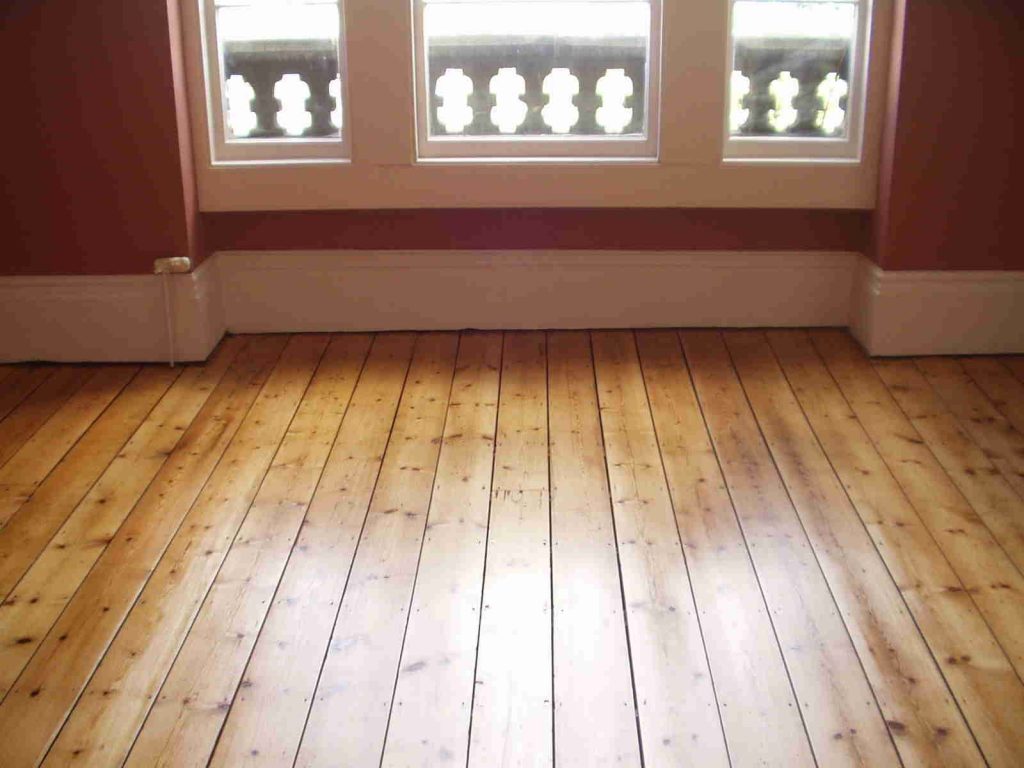
Installing an environmentally-friendly flooring product is a great way to help the planet. Photo: Elegant Floors (2016)
Flooring is a major part of any home—not only does it provide a surface to walk on, it’s also a focal point of interior design. While homeowners were once limited in their flooring options, today there are countless choices available, including a diverse array of both natural and synthetic materials. However, since every home needs floors, it’s easy to see how the materials needed to manufacture them can have an impact on the environment. That’s why many Bay Area homeowners are interested in eco-friendly options that allow them to walk on their floors without leaving an oversized carbon footprint.
Fortunately, there’s a wide variety of such options available in today’s flooring market. To cover the bulk of these, we’re dividing them into two categories: “sustainable” and “recycled.” In our first segment, we’ll cover floors that fall under the heading of “sustainable,” which means they’re made from resources that are naturally replenished, resulting in minimal environmental impact. Here are some of the top sustainable flooring options:
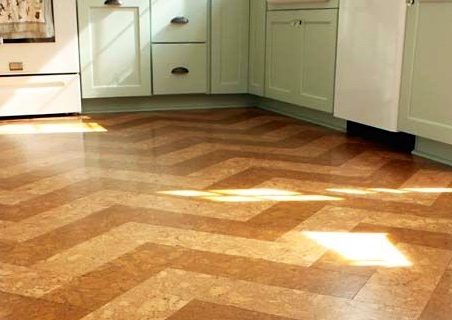
In addition to being eco-friendly, cork flooring is durable, resilient and naturally hypoallergenic. Photo: First Choice Abbey Carpet (2016)
Cork
Cork is a naturally occurring material that grows on cork oak trees and is harvested by stripping the tree’s outer bark, which regenerates to be re-harvested every nine years. After harvesting, the cork sheets are cured, boiled and pressed. Typically, cork flooring is made from the leftover scraps after the sheets have been processed for their more common application: wine bottle corks. Besides having a low ecological impact, cork flooring offers some great performance benefits: it’s durable, resilient, naturally hypoallergenic, and available in a wide range of styles and colors.
The one drawback of cork flooring is that the trees from which it’s harvested grow exclusively in the Mediterranean region of Europe, so it has to be shipped halfway across the world, which contributes to pollution and energy depletion. On the other hand, if you purchase a cork floor, you’re contributing to the preservation of cork oak forests, also known as Montados. As winemakers explore alternative methods of sealing wine bottles (such as synthetic corks and aluminum screw tops), the natural cork market has fallen into a slump, devaluing the land where cork trees grow and leaving many Montados unkempt. The rising popularity of cork flooring may reinvigorate the cork market and allow for the protection of this unique natural resource.
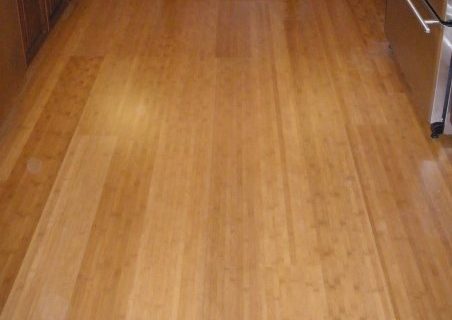
When allowed to fully mature, bamboo can rival the durability of hardwoods like maple. Photo: Floor Coverings International (2016)
Bamboo
While bamboo is technically a grass, its sturdy, resilient character is similar to that of true hardwood, which makes it a viable flooring material. Even better, bamboo regenerates faster than trees—three to five years after harvesting, as opposed to multiple decades. Plus, like cork, responsible bamboo harvesting actually improves ecological conditions for the plant and promotes healthy growth.
However, with bamboo, it’s not always easy to know whether sustainable harvesting methods are being followed. Bamboo currently has no Fair Trade certification, which means harvesting and production (not to mention worker conditions) are not closely regulated, leaving the door open for negligent practices. For this reason, it’s important to confirm that your bamboo flooring comes from a reputable source.
Bamboo is often compared to maple in terms of durability, but it’s known to be more sensitive to surface scratching than most hardwoods. Even more concerning, if bamboo isn’t given time to fully mature before it’s harvested, it can be soft and weak, which can compromise a floor’s integrity. This reemphasizes the importance of purchasing your bamboo floors from a responsible, eco-conscious source.
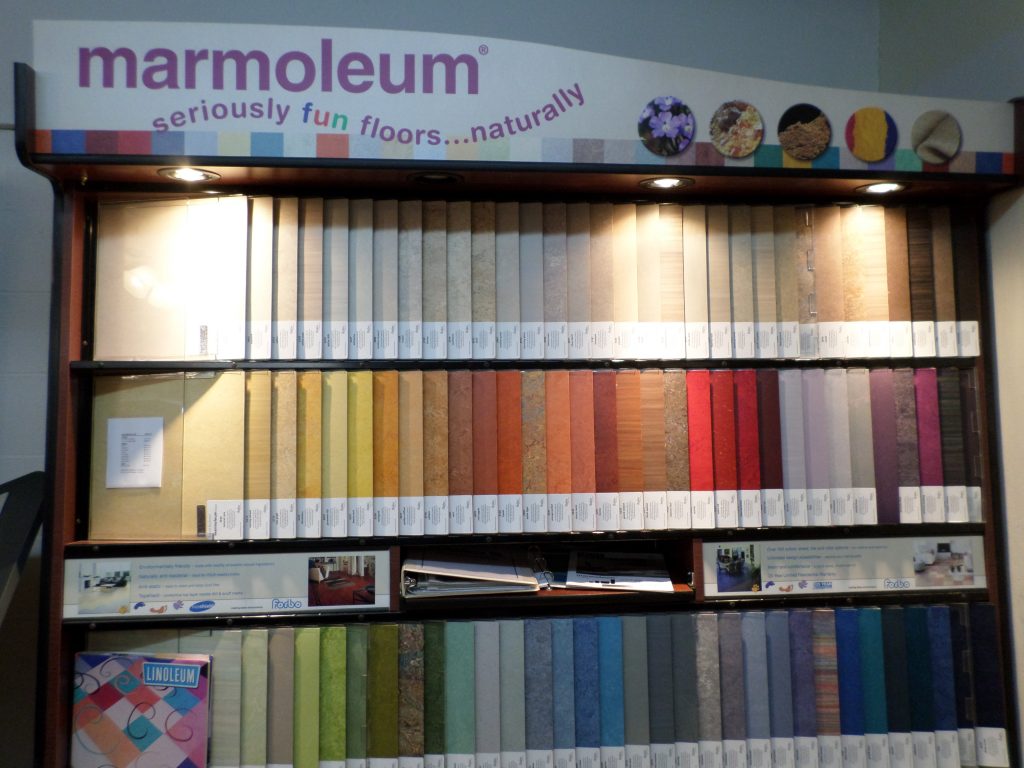
Natural linoleum is sometimes called “marmoleum” to distinguish it from earlier iterations of the product. Photo: Blodgett’s Abbey Carpet & Flooring (2016)
Linoleum
Often confused with synthetic sheet vinyl, linoleum is actually a natural product. Not that it grows on trees—it’s very much engineered. However, it’s constructed from all-natural materials, including linseed oil, tree resins, cork dust, wood flour, limestone and mineral pigments, all of which are mounted to a burlap, canvas or wood backing. Because of its natural composition, linoleum is nontoxic, antibacterial and biodegradable. It’s also durable, easy to clean and pleasing to the eye, making it an ideal choice for home flooring.
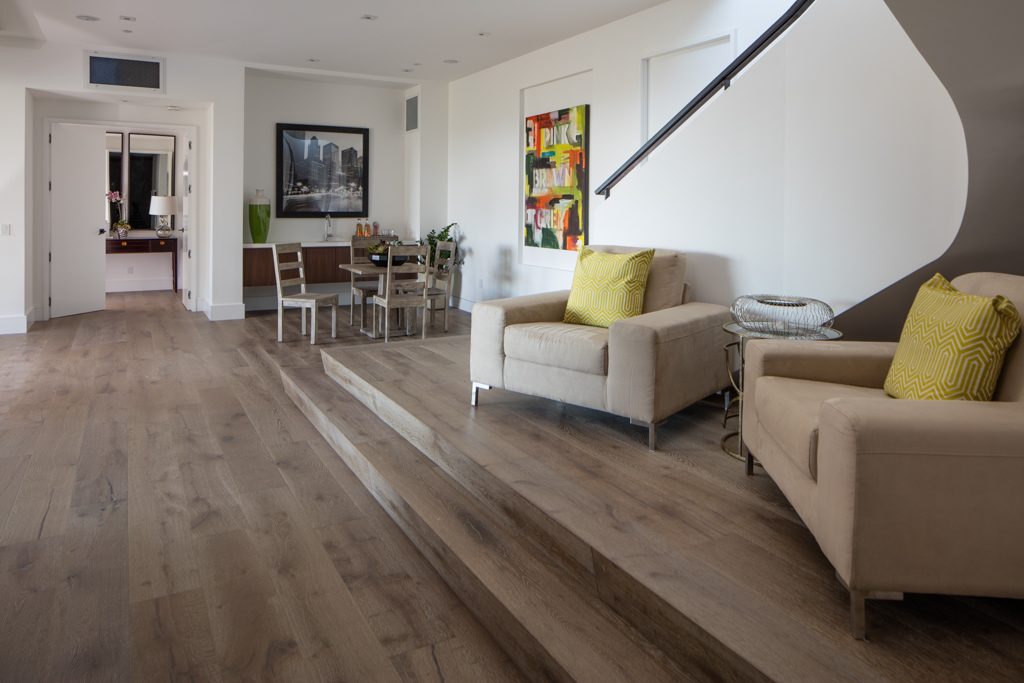
To ensure your hardwood flooring was sustainably sourced, choose a product with an FSC certification. Photo: Baila Floors (2016)
FSC-certified wood
While carelessly harvested wood can be an ecological nightmare, the opposite is true when wood is harvested in a responsible, sustainable manner. To help consumers distinguish the difference, the Forest Stewardship Council (FSC) was formed. This international nonprofit certifies wood that has been harvested and processed in adherence to a stringent list of criteria, which addresses everything from management planning to worker conditions and wildlife protection.
By purchasing a floor made with FSC-certified wood, you can enjoy the aesthetic value of an authentic wood product without worrying about negative environmental consequences. To make your purchase even more environmentally-sound, consider buying wood flooring sourced from a local mill, which minimizes transportation-related energy depletion and supports local commerce.
A caution about terminology
While sustainable flooring is a great option, be cautious of accepting terms like “sustainable” and “renewable” at face value, because it’s not always that simple. Take wool carpeting: it’s technically sustainable because it grows on sheep, but it’s important to account for the ecological impact of keeping, feeding and watering sheep herds (which some research indicates is considerable). Similarly, with imported products like cork and bamboo, you should consider the adverse byproducts of exportation. For this reason, it’s a good idea to research flooring products before buying to confirm they’re as environmentally-friendly as they’re made out to be.
Check out part two of our “Low-Impact Floors” series, where we talk about some recycled flooring options.
